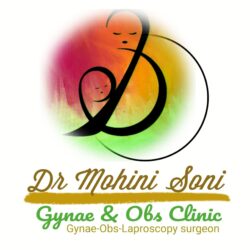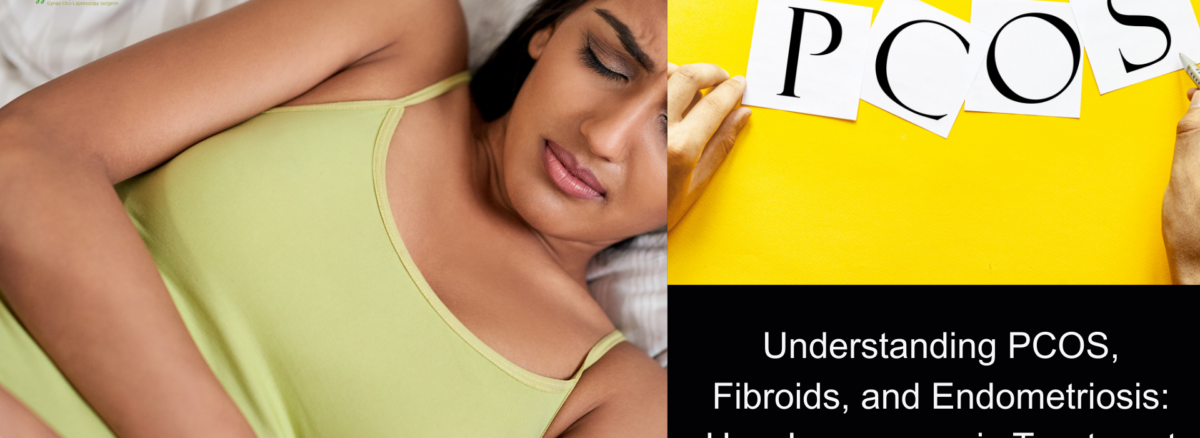Fertility challenges can be incredibly personal and sometimes overwhelming for many women. Conditions like Polycystic Ovary Syndrome (PCOS), fibroids, and endometriosis are common hurdles that affect reproductive health, making conception difficult for some. The good news is that modern medicine, especially laparoscopic surgery, offers hope—helping women overcome these issues gently and effectively on their path to motherhood.
What Are PCOS, Fibroids, and Endometriosis?
- PCOS (Polycystic Ovary Syndrome) is a hormonal imbalance where the ovaries grow small cysts and disrupt regular ovulation. This often leads to irregular periods, hormonal changes, and difficulties getting pregnant. Beyond fertility, it can affect overall health, causing symptoms like acne, excess hair growth, and weight gain.
- Fibroids are non-cancerous growths in or on the uterus. While many women with fibroids conceive naturally, larger or strategically placed fibroids can interfere with pregnancy or cause discomfort. Symptoms may include heavy bleeding, cramping, or pelvic pressure.
- Endometriosis occurs when tissue similar to the lining inside the uterus grows outside it, causing inflammation, scarring, and pain. This can block fallopian tubes or disturb the reproductive environment, making it harder to conceive and causing painful periods or pelvic pain.
How Does Laparoscopic Surgery Help?
Laparoscopic surgery is a minimally invasive technique where surgeons make tiny cuts and use a camera to guide precise treatment. Unlike traditional open surgery, this method causes less pain, less scarring, and speeds up recovery.
Here’s what laparoscopic surgery can do:
- For PCOS: Laparoscopic ovarian drilling may be done to stimulate ovulation when medications aren’t enough, opening new doors for conception.
- For Fibroids: Laparoscopic myomectomy removes fibroids, especially those that distort the uterine cavity or cause symptoms, helping restore fertility.
- For Endometriosis: Laparoscopy allows doctors to remove or destroy misplaced tissue, easing pain and improving chances to conceive.
Why Choose Laparoscopy?
- Less Pain and Quicker Healing: Smaller incisions mean faster recovery and minimal discomfort.
- Precision Surgery: Only affected tissues are treated, preserving healthy reproductive organs.
- Enhanced Fertility: Removing barriers and restoring function lets many women conceive naturally or respond better to fertility treatments like IVF.
- Short Hospital Stay: Many patients go home the same day or after an overnight stay, returning to normal life sooner.
Conclusion
Living with PCOS, fibroids, or endometriosis can feel discouraging—but laparoscopic surgery offers a modern, compassion-driven path forward. It’s a safer, less invasive way to treat these conditions and reclaim fertility with less pain and faster healing.
If these issues are affecting your chances of pregnancy, it’s worth consulting a skilled gynecological surgeon experienced in laparoscopy. Together, you can find the right treatment to support your journey to motherhood with confidence and hope.
Frequently Asked Questions
Q1: Is laparoscopic surgery painful?
Because the incisions are small, most women experience less pain and quicker recovery than with traditional surgery.
Q2: How soon after surgery can I try to get pregnant?
This varies, but usually within a few weeks to a couple of months after your doctor confirms you’ve healed.
Q3: Can laparoscopic surgery cure PCOS?
It doesn’t cure PCOS but can help stimulate ovulation when other treatments haven’t worked.
Q4: Are all fibroids treated with laparoscopy?
Smaller fibroids or those affecting fertility are ideal for laparoscopic removal. Larger fibroids might need other treatments.
Q5: Does laparoscopic treatment guarantee pregnancy?
While it significantly improves fertility, pregnancy depends on multiple factors including age, overall health, and other fertility considerations.

